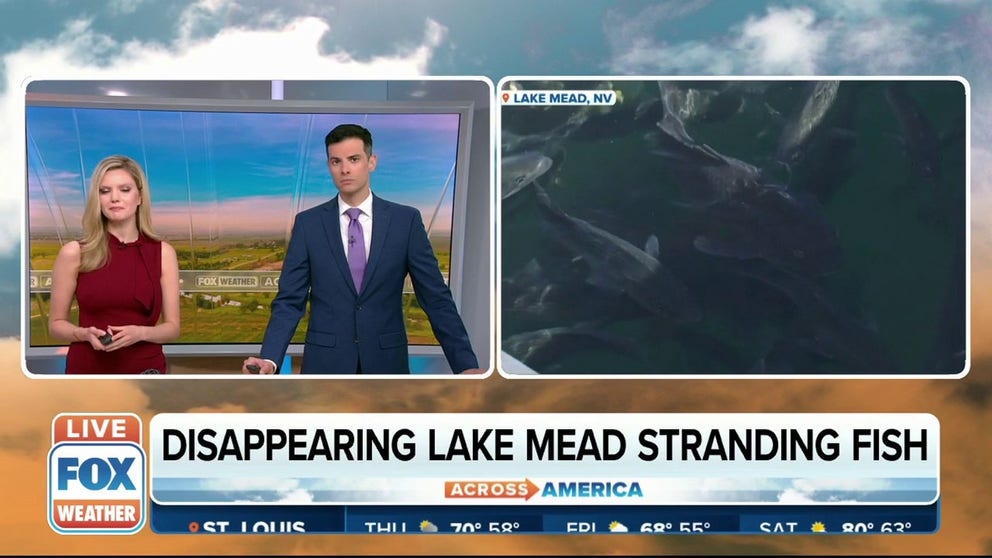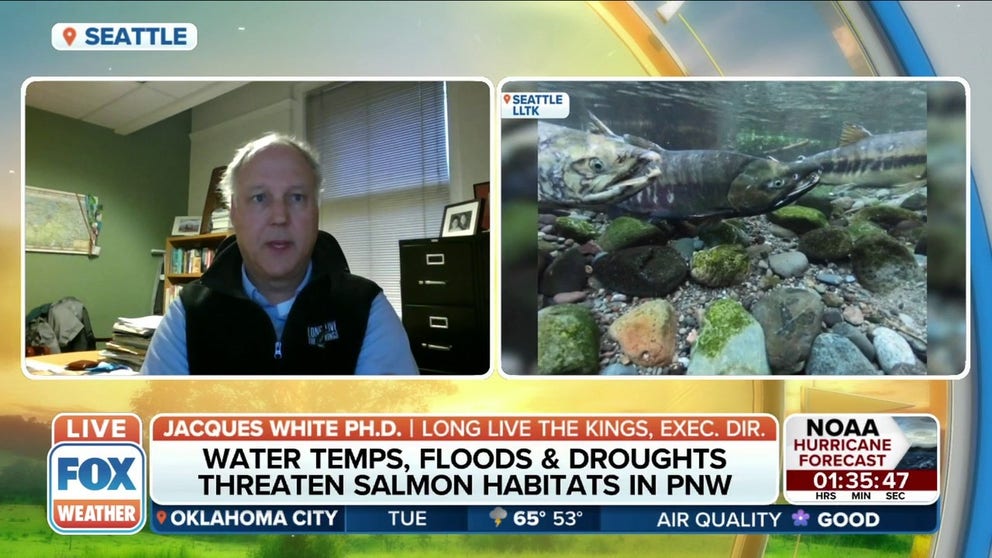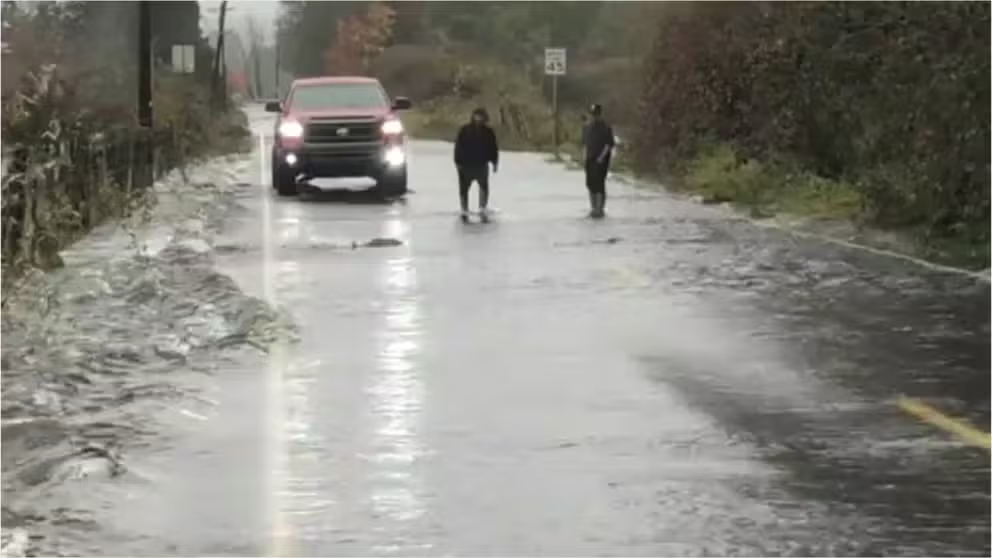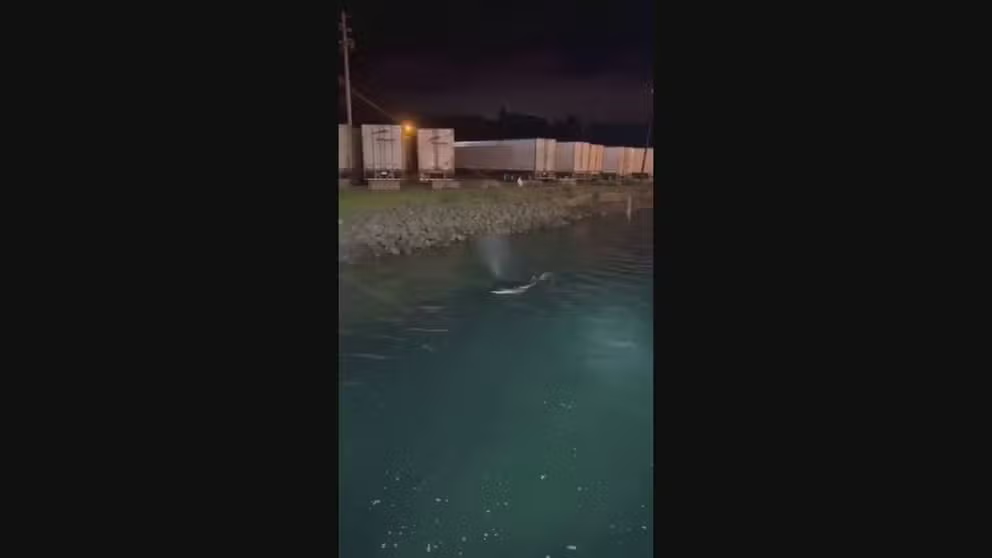Tale of two extremes: How too much and not enough rainfall is hurting fish in the West
Western fish are having a tough time in recent years thanks weather and climate change.
Wildlife officials rescue fish from disappearing Lake Mead
As Lake Mead's levels continue to drop to record low levels, wildlife officials have been hitting the puddles left behind to rescue fish.
Extreme weather across the West is causing fish populations to flounder. The Pacific Northwest saw too much rain, especially this winter, and recently there have been hot summerlike temperatures. The rest of the West wishes for the foot of excess rain Seattle has received so far this year. Lake Mead sits at record-low levels.
Both extremes spell out trouble for native fish. Scientists believe the extreme heat, extreme drought and extreme rainfall will become more prevalent in the future because of climate change.
Lake Mead's fish out of water
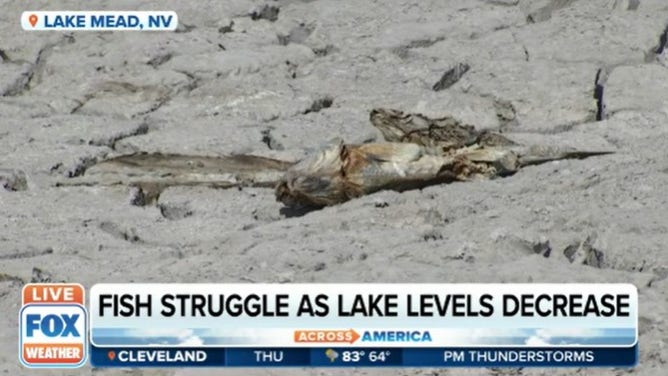
Lake Mead's dropping levels have left some fish high and dry.
(FOX Weather)
Lack of water is killing fish in much of the West. California is in year three of drought and residents were asked to cut water use by 15%. Less rain and snow caused Lake Mead to drop to record-low levels, stranding fish and sometimes leaving them high and dry.
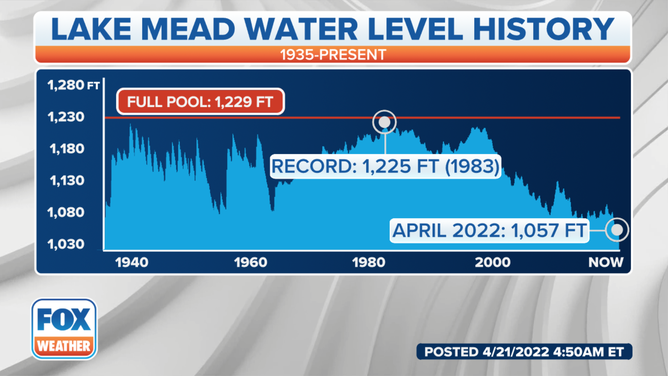
Lake Mead's current water level is 1,057 feet, 172 feet below what is considered a full pool.
(FOX Weather)
Areas of the lake are now just puddles. Some fish didn’t make it into those puddles before they were left to bake on the dried lake bed.
"We went in and did a salvage effort and tried to get all the larger fish that are of reproductive size and put those into the lake," Brandon Senger of the Nevada Department of Wildlife told FOX 5 Las Vegas. "We like to go out there and try to salvage fish populations when we can."
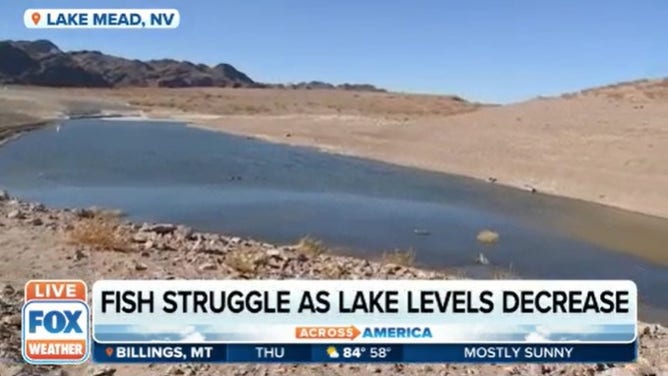
Dropping water levels in Lake Mead are cutting off some areas and stranding fish in puddles.
(FOX Weather)
Native fish populations that managed to stay in the deeper parts of the lake formed by the Hoover Dam on the Colorado River are thriving.
"We're seeing record numbers of native fish in the Grand Canyon, said Senger. "Frankly, it's probably the biggest stronghold of native fish in the entire Colorado River mainstream."
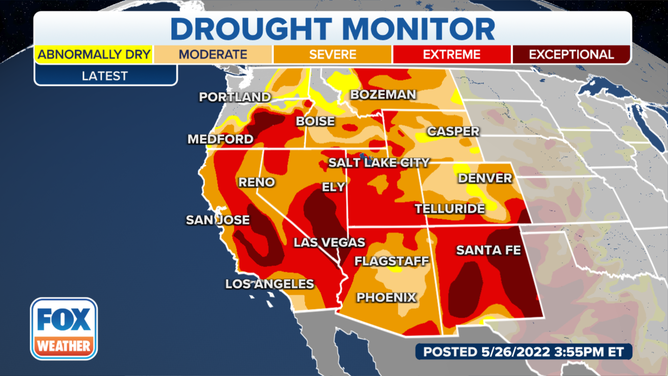
Over half the West is classified under Severe and Extreme Drought by the U.S. Drought Monitor.
(FOX Weather)
Summer forecasts show no drought relief in the upcoming months.
NEW SUMMER FORECAST DAMPENS HOPE FOR DROUGHT RELIEF IN WEST
Salmon in the Pacific Northwest deal with too much water
Fourteen species of salmon and steelhead trout are at risk of extinction, according to Washington state's State of Salmon report. The U.S. Geological Survey reported that coho salmon from the lower Columbia River may already be extinct.
You wouldn’t think more water would be a problem for a salmon, but it is.
Water temperatures, floods, droughts threatening salmon habitats in Pacific NW
With summer fast approaching, local environmentalists are sending a warning about the impact severe heat has on salmon in the Pacific Northwest. Salmon thrive in cold water.
"A higher frequency of severe floods will result in increased egg and alevin mortality … especially for fall- and winter-spawning species," wrote Pete Bisson, in research published by the U.S. Department of Agriculture.
Coastal Washington experienced record flooding through the fall of 2021. Almost a foot of rain fell upstream of Sumas, flooding most of the town.
‘IT’S SO HEARTBREAKING’: 75% OF THE TOWN DAMAGED BY WASHINGTON FLOOD
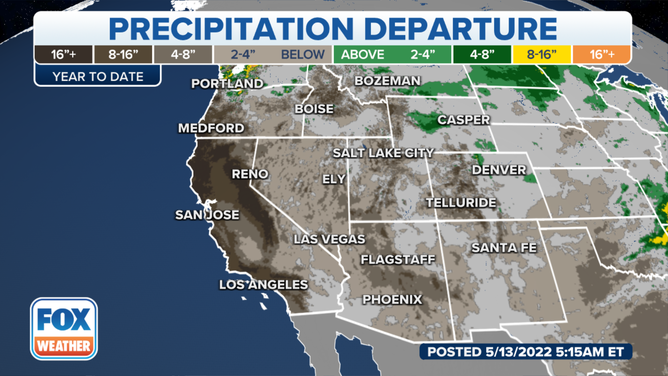
Since the first of the year most of the West is inches to feet below average rainfall while Seattle is about a foot over.
Flooding and stronger river flow can wash away salmon nests, eggs and juveniles.
Salmon lay eggs, hatch and spend much of their youth in freshwater streams. They spend the majority of life in the open ocean and then return to the same streams where they were born to mate and die. We’ve all seen pictures of salmon running upriver to mate.
CAUTION: SALMON CROSSING! SEASON’S FIRST FLOOD BRINGS ANNUAL MIGRATION TO STREETS NEAR SEATTLE
Season's first flood brings a salmon crossing to streets near Seattle
Those weren't your typical pedestrians crossing the streets of Mason County in Western Washington during an atmospheric river Thursday afternoon. It was salmon!
About 90% of juvenile salmon will die in the ocean before reproducing, researchers told FOX 13 Seattle. So, climate and human-created challenges on mating salmon and their young can drastically reduce the population.
"The issue with salmon and climate is that salmon have been beaten up by a number of different factors; things like overfishing, loss of habitat, mismanagement of how we manage our hatchery populations that supplement salmon," explained Jacques White, executive director of the non-profit group Long Live the Kings which focuses on about the plight of salmon in the Pacific Northwest. "So will it affect you in the future? It certainly is changing the amount of salmon that are getting landed from fisheries."
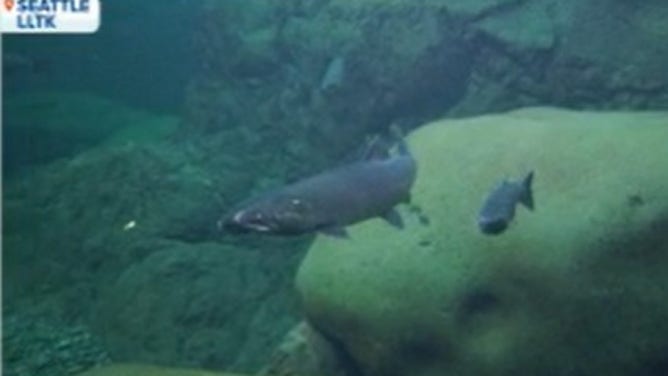
Salmon swimming upstream near Seattle.
(LLTK)
The EPA studied Chinook salmon in the Salish Sea, north of Seattle and found that numbers were down 60% in 2018 after a steady decline since recordkeeping began in 1984.
"So we’ve seen impacts increasing on precipitation, water temperatures, floods, drought and forest fires and sea-level rise along shorelines and ocean conditions," biologist Correigh Greene told FOX 13 Seattle.
The Pacific Northwest experienced a deadly heatwave last summer. The Washington Department of Health blamed 100 deaths on the record heat and recorded 38 more deaths the week after. Wildlife officials claim that untold numbers of salmon, a cold-water fish, perished as well.
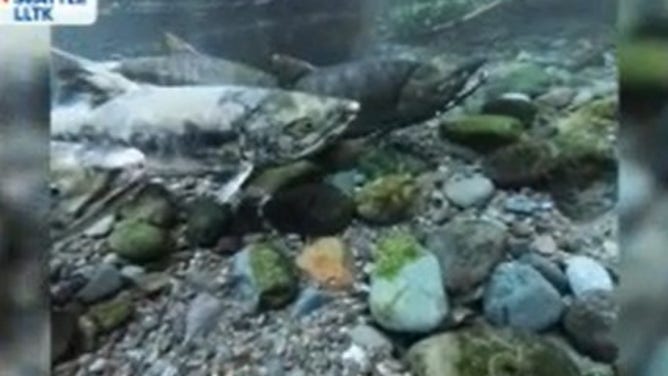
Salmon near Seattle.
(LLTK)
"With the changing climate, when we have temperatures, well over 100-degree temperatures in Portland, Oregon and Seattle, Washington, that just is not good environment for our salmon," explained White. "Salmon (need) the water temperature is around 55 to 64 degrees Fahrenheit for them to thrive and do well. And when we get water temperatures here over 70 degrees early in the summer, that is really not ideal."
WHY CLOUDS COULD BE RESPONSIBLE FOR THE 2021 DEADLY HEAT WAVE IN THE PACIFIC NORTHWEST
Increased water temperatures not only sicken and kill salmon but also increase a salmon’s metabolism upping the need for food. Their food source may not be as readily available in the warm water. The USDA researcher also cautioned that predators and food competitors of salmon may be better adapted to the warmth.
As salmon die off, so do their predators like the orca, the ocean’s top predator, according to the National Oceanic and Atmospheric Administration.
Killer whale in a Port Angeles, Washington lagoon
A sheriff's sergeant found this 8-year-old Biggs killer whale in a Port Angeles lagoon, northwest of Seattle. While the Pacific Whale Watch Association said this whale was well known in the area, the Orca Behavior Institute called the behavior bizarre because the animal would have had to swim through a small channel. The youth was gone by morning.
"(The declining salmon population) affects both local wildlife here and also folks that live in coastal communities that rely on salmon for their livelihood," White said. "One of the most important species in the Pacific Northwest here that's directly affected by the abundance of salmon is it is a group of killer whales called the Southern Resident Killer Whales that used to spend a fair amount of time in the inland waters here in Puget Sound, Washington, and up in the Strait of Georgia and Canada. They rely – 98% of their diet is salmon and about 80% of that is Chinook salmon, which are the largest salmon species. And when they can't find salmon to eat, they start to starve and they can't survive."
